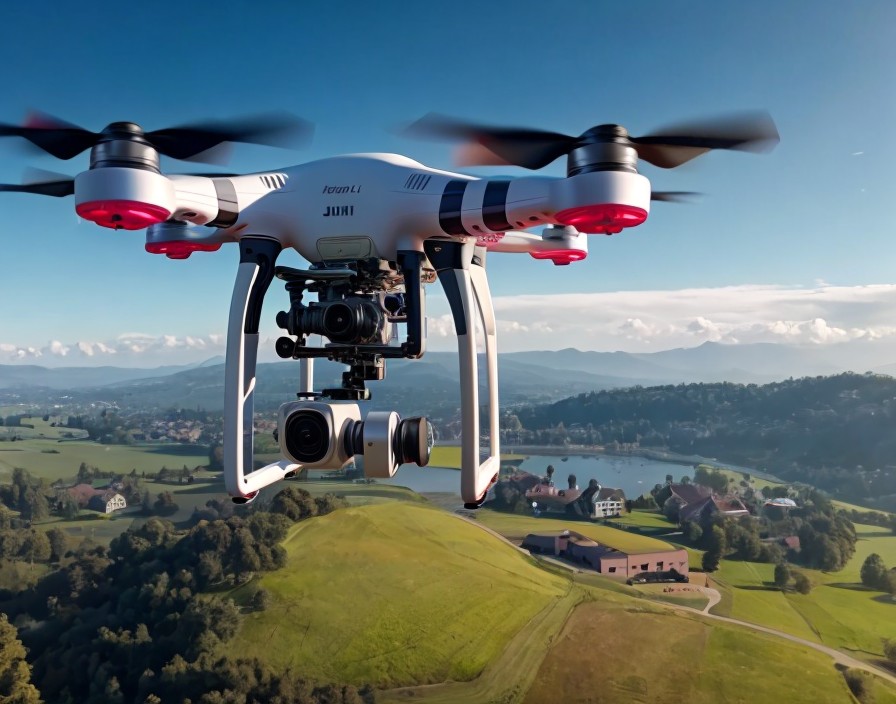In an era where technological advancements are transforming every aspect of our lives, from communication to healthcare, it’s not surprising that the world of toys is undergoing a high-tech renaissance. The days of simple dolls and basic building blocks seem like a distant memory as cutting-edge components and sophisticated technologies are seamlessly integrated into the playthings of today. This evolution not only reflects the dynamic nature of the tech industry but also presents a paradigm shift in how children interact and learn through play.
One of the most striking developments in the realm of high-tech toys is the integration of artificial intelligence (AI) and machine learning. Gone are the days when toys merely responded to a pull of a string or the press of a button. Today, AI-driven toys can adapt to a child’s preferences, learn from interactions, and evolve over time. For instance, smart dolls equipped with natural language processing capabilities engage in meaningful conversations, fostering language development and social skills in children. The intersection of AI and play is not just a technological feat; it’s a leap towards a more personalised and interactive form of entertainment and education.
To delve into this transformative trend, let’s take a closer look at the market dynamics. According to a recent report from Market Research Future, the global smart toys market is projected to witness a compound annual growth rate (CAGR) of 15.5% from 2022 to 2027. This surge is attributed to the increasing demand for interactive and connected toys that offer enhanced learning experiences for children. As parents become more tech-savvy and discerning in their purchasing decisions, the market is responding with a wave of innovative products designed to stimulate both the imagination and intellect of young minds.
Notably, industry leaders recognise the pivotal role of high-tech components in shaping the future of toys. As Brian Johnson, CEO of a prominent toy manufacturing company, emphasises, “Technology is not just an add-on to toys anymore; it’s at the core of creating memorable and educational play experiences. We are witnessing a shift where toys are becoming intelligent companions, fostering creativity and critical thinking.”
The integration of robotics is another fascinating dimension of the high-tech toy landscape. From programmable robots that teach coding to miniature drones that offer a glimpse into the world of aviation, these toys are not only entertaining but also serve as gateways to STEM (science, technology, engineering, and mathematics) education. This aligns with the broader societal push to prepare the next generation for the demands of an increasingly tech-driven workforce.
To gain insights into the implications of this integration, I spoke with Dr. Sarah Thompson, a child psychologist specialising in the impact of technology on childhood development. She notes, “The incorporation of robotics in toys is a double-edged sword. On one hand, it provides an avenue for children to explore and understand complex concepts in a playful environment. On the other hand, we must be mindful of the potential over-reliance on technology, which could hinder the development of essential physical and social skills.”
Balancing screen time and physical play is indeed a challenge that parents grapple with in this digital age. The American Academy of Paediatrics recommends that children aged 2 to 5 years should have no more than one hour of screen time per day, emphasising the importance of a diverse range of activities for healthy development. High-tech toys, therefore, need to be designed with a holistic approach, ensuring they complement rather than replace traditional forms of play.
Beyond the confines of the home, high-tech toys are making waves in educational settings. Coding kits and interactive learning platforms are gaining popularity in schools, fostering a hands-on approach to technology education. The STEM Toys Market Report by Grand View Research predicts that the global STEM toys market will surpass $10 billion by 2025, driven by the increasing emphasis on skill-building and experiential learning in educational curricula.
While the integration of high-tech components in toys is undoubtedly enriching the play experiences of children, it also raises questions about data privacy and security. Smart toys often collect and transmit data to the cloud, posing potential risks if not adequately protected. In response to these concerns, regulatory bodies are increasingly scrutinising the industry, urging manufacturers to adhere to strict guidelines to safeguard the privacy of young users.
In conclusion, the marriage of technology and toys is ushering in a new era of play, where imagination is amplified by artificial intelligence, and learning is seamlessly intertwined with entertainment. As the high-tech toy industry continues to innovate, it is imperative for stakeholders to strike a balance between technological sophistication and the holistic development of children. The future of play is undeniably digital, but it is essential that this digital landscape remains a supportive and enriching environment for the physical, cognitive, and social growth of our youngest minds.
Photo credit: René Cortin – Flickr – Wikimedia Commons


